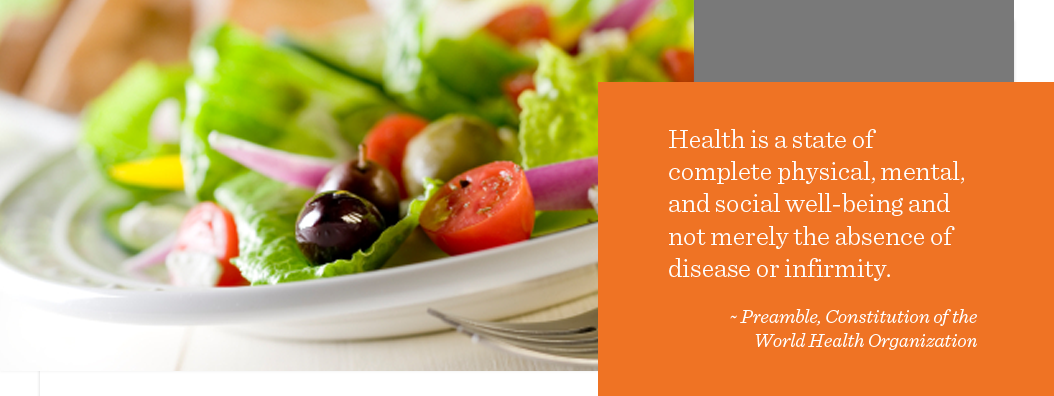Our New Patient Registration and Medical History forms are avaible on one PDF file for your convenience.

In the course of human history Preventive Medicine/Public Health interventions prevented more human suffering and saved more lives than all the medical treatments combined. Antibiotics got the much of the credit for controlling deadly epidemics of infectious diseases, but in fact death rates from infectious diseases began falling many years before antibiotics were even available. Public Health measures such as assuring access to clean food and water, and encouraging the practice of simple lifestyle behavior changes such as hand washing, putting garbage in a bin instead of tossing it out the window, and visiting a doctor for a shot before you got sick instead of afterward, saved countless millions of people from unnecessary suffering and death. In fact, Preventive Medicine/Public Health is the only branch of medicine to completely eradicate a disease from the face of the earth, the last natural case of smallpox was seen in Somalia in 1977.
As the story of hand washing illustrates human behavior/lifestyle changes do not come easily, but with persistence it does come. We are now in the midst of a growing epidemic of chronic/lifestyle diseases, the most common causes of death are diseases that can be prevented and reversed by changing what we eat and how we live. The standard medical treatments available do not cure these lifestyle diseases; they suppress symptoms and add their own potentially dangerous side effects. The answer to this growing problem is the expansion of Preventive Medicine to include Lifestyle Medicine.
Preventive Medicine is currently practiced at three levels, primary, secondary and tertiary. Primary prevention aims to avoid the occurrence of disease and is most commonly associated with government agencies and public health departments that assure health services such as clean water, sanitation, food safety, and communicable disease control. This has been successful for infectious diseases and public safety but judging by the growing epidemic of lifestyle diseases, current primary prevention efforts that focus on population-based health education/health promotion programs are not sufficient. The Centers for Disease Control and Prevention (CDC) currently allocates less than 10% of its annual budget to lifestyle/chronic disease prevention. The fact that most primary prevention programs still refer to lifestyle diseases as "chronic diseases" is a part of the problem. That term discounts lifestyle and reinforces the myth that these diseases are a “normal” part of aging and everyone will get them in time. CDC actually lists age as a risk factor for many chronic diseases. This myth along with the lack of resources and misinformation about nutrition leads to much unnecessary suffering and death.
Secondary prevention aims to avoid disease progression by screening for the early stages of disease when it can be easily treated and "cured." Mammograms to detect early breast cancer are an example of secondary prevention. This is the main focus of clinical preventive medicine as it is currently practiced. There are three fundamental problems with this approach to “prevention.” First, most people who eat the standard American diet have some stage of at least one lifestyle disease, most teenagers killed in traffic accidents already have evidence of coronary artery disease at autopsy. Current screening tests are not accurate; mammography only detects 33% of breast cancers. Third, there are no cures for lifestyle diseases; current medications only treat symptoms and risk factors. Surgery removes cancer but not the underlying conditions that allowed the cancer to grow and few patients are given accurate nutrition advice after their surgery. Consequently, "preventive" screening may or may not detect early disease but when disease is detected it often means medications for the rest of the individual’s life. When disease is not detected individuals who should make lifestyle changes get a false sense of security. Patients are rarely ever told at any stage of the screening, early detection and treatment process that comprehensive lifestyle changes that include a plant based diet, exercise and stress reduction could completely reverse their disease, none are referred for these Lifestyle Medicine services. Lifestyle Medicine is therefore a necessary addition to all secondary prevention/screening programs to provide patients with the evidence-based health information that would lead to behavior changes and prevent unnecessary suffering and death.
Tertiary prevention aims to avoid disability and untimely death from established disease by restoring function and reducing complications and disease recurrence. Cardiac rehabilitation after a heart attack and bypass surgery is one of the most common examples of tertiary prevention. This is changing, but most cardiac rehabilitation programs focus only on exercise which may be beneficial but it does not unclogging blocked coronary arteries. They provide outdated nutrition advice, despite well documented scientific evidence that a mainly plant based diet will reverse coronary artery blockage. Hopefully, now that high profile public personalities Bill Clinton and Mike Tyson have adopted a plant-based diet to prevent the recurrence of heart problems the public will start to demand that this information and tertiary prevention programs will actually prevent unnecessary suffering and death.
This is an excerpt from a poem about prevention by Joseph Malins (1844 – 1926). The more things change the more they stay the same, this poem was written in 1895:
"………Better guide well the young than reclaim them when old,
For the voice of true wisdom is calling.
"To rescue the fallen is good, but 'tis best
To prevent other people from falling."
Better close up the source of temptation and crime
Than deliver from dungeon or galley;
Better put a strong fence 'round the top of the cliff
Than an ambulance down in the valley."
To read the whole poem click here: A Fence or an Ambulance
